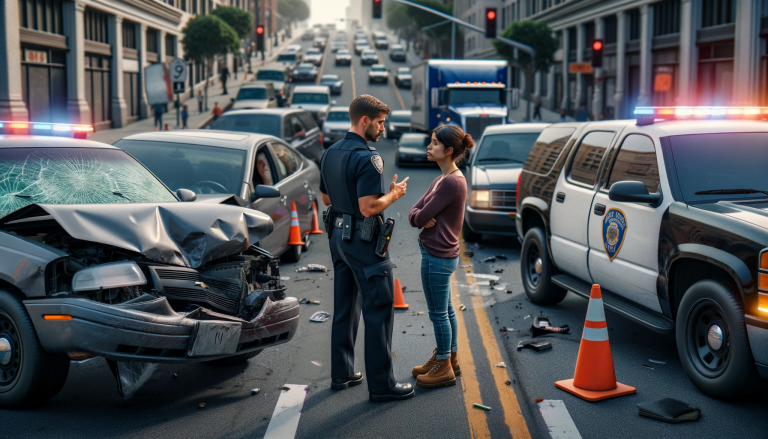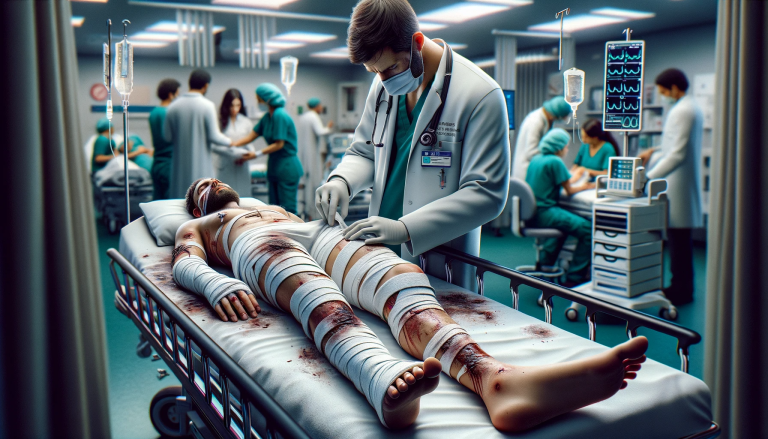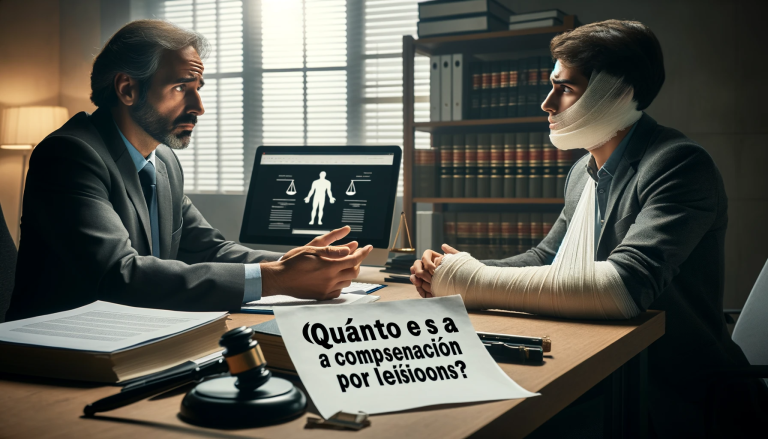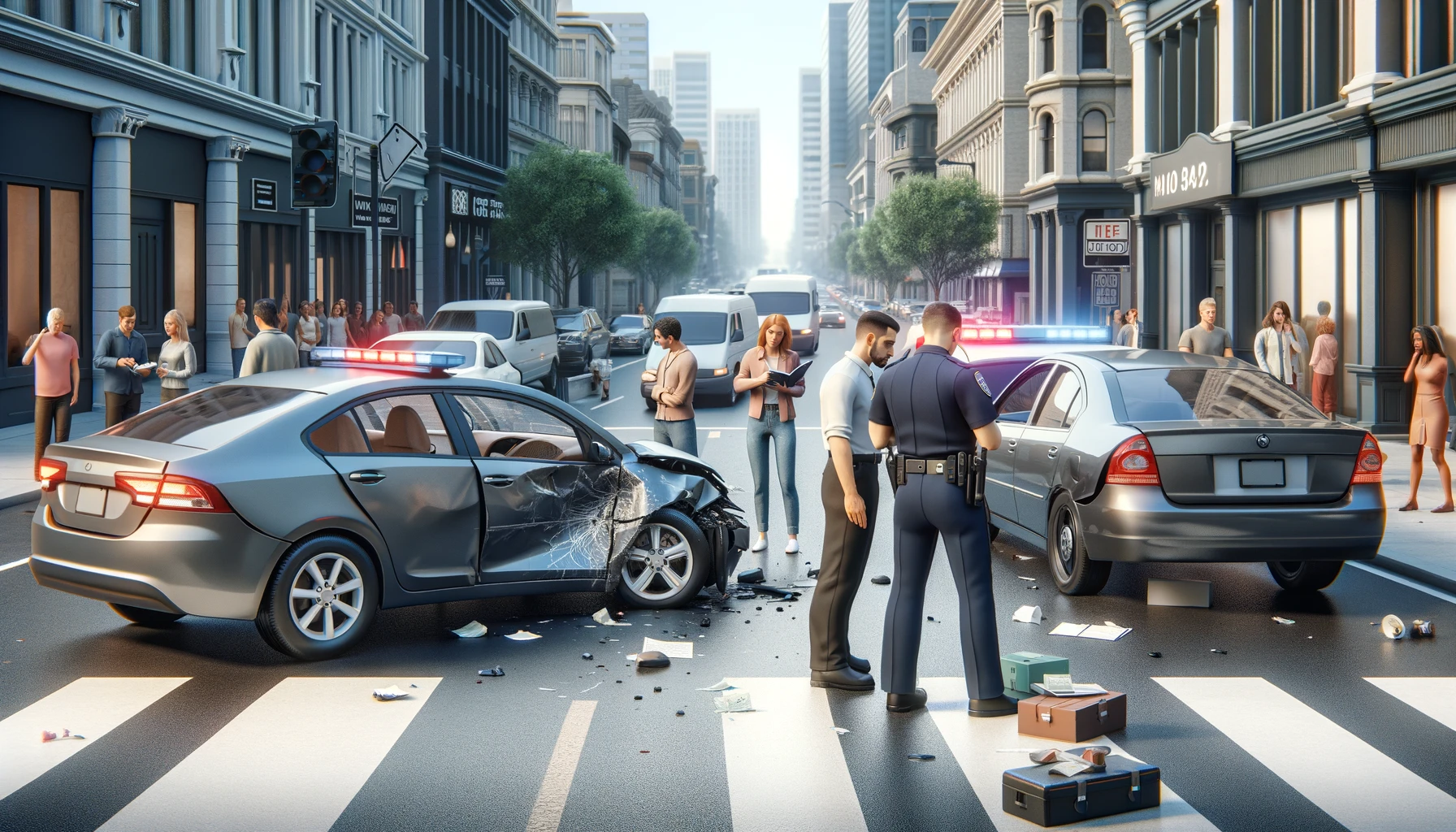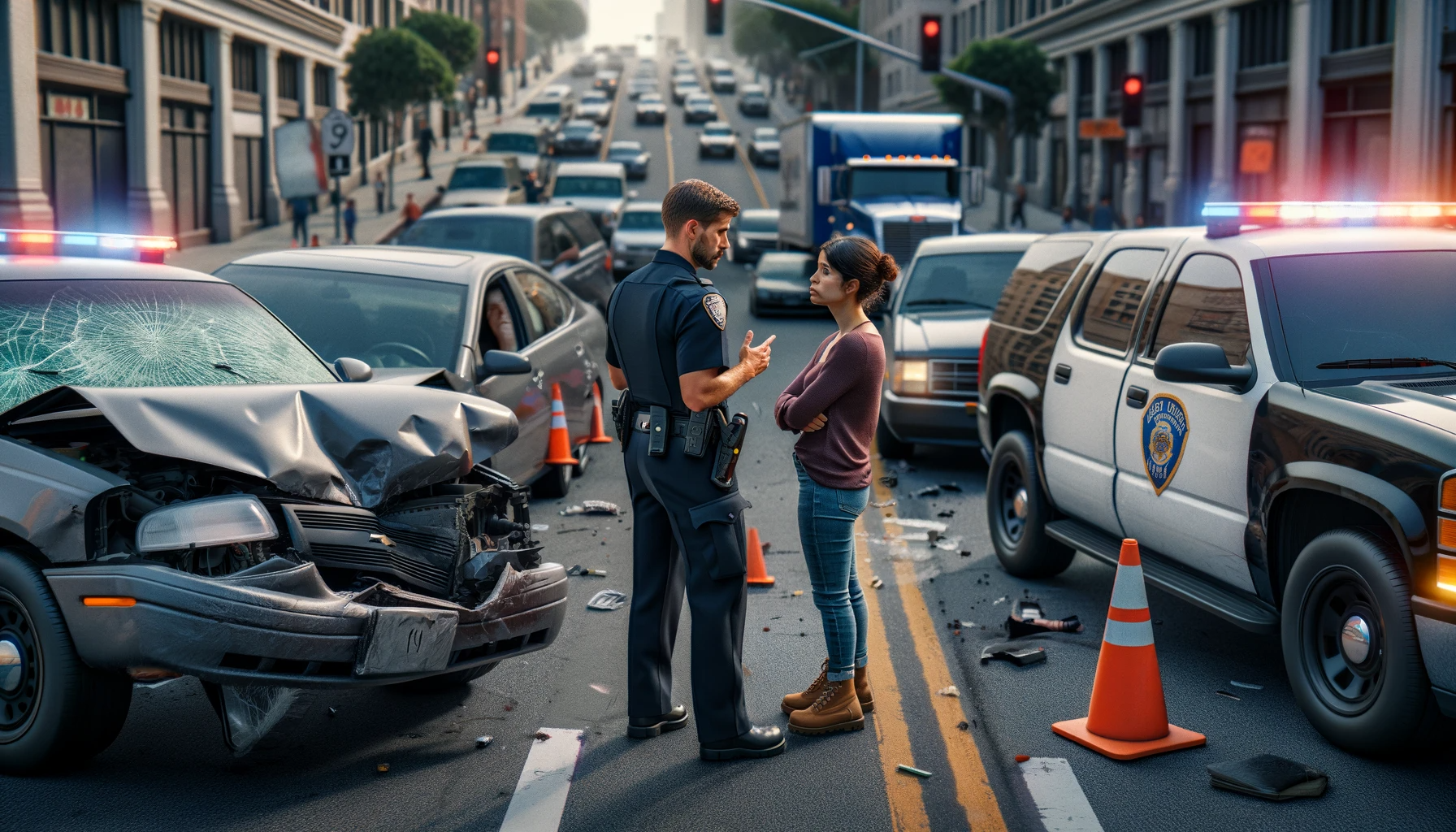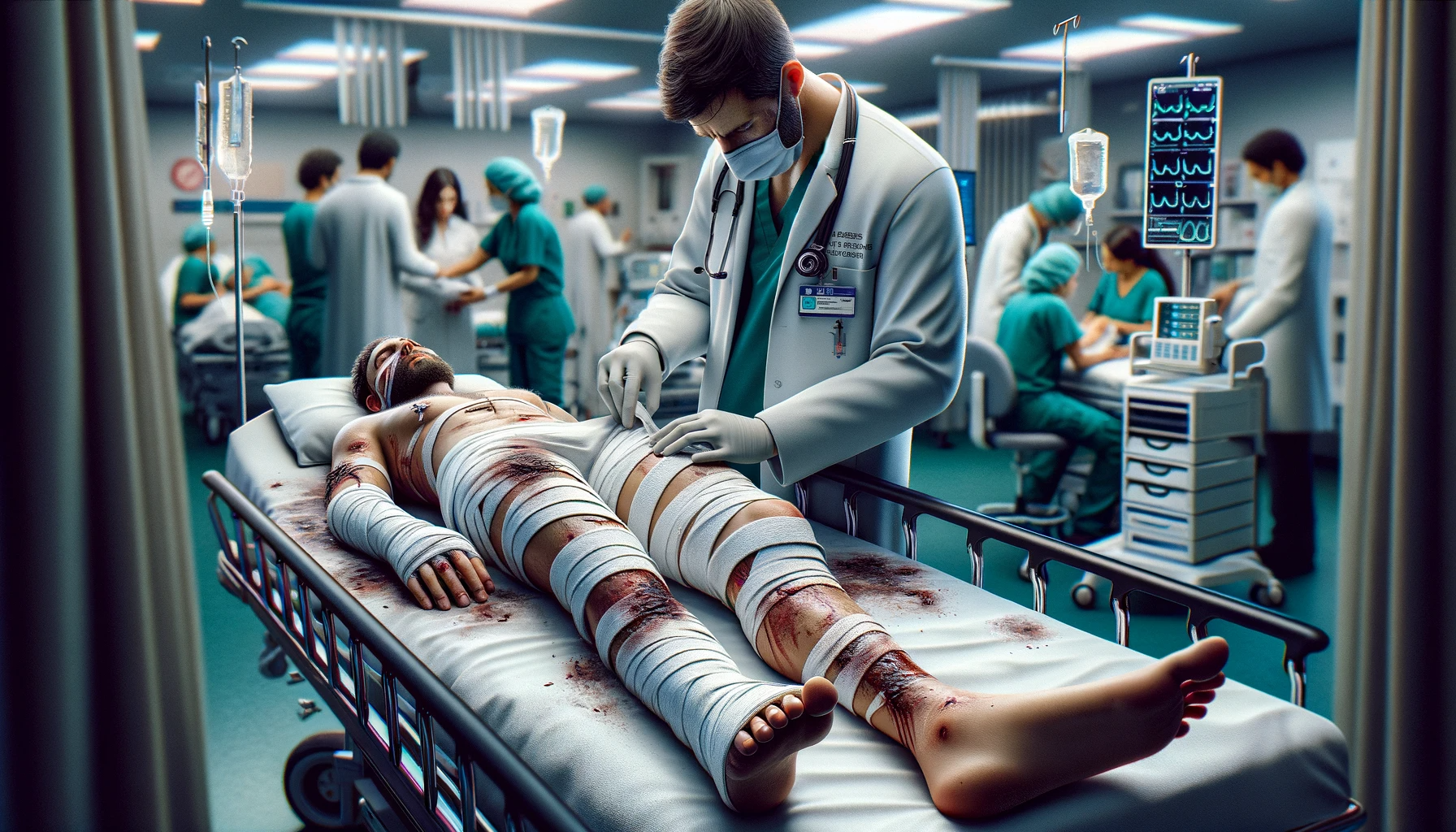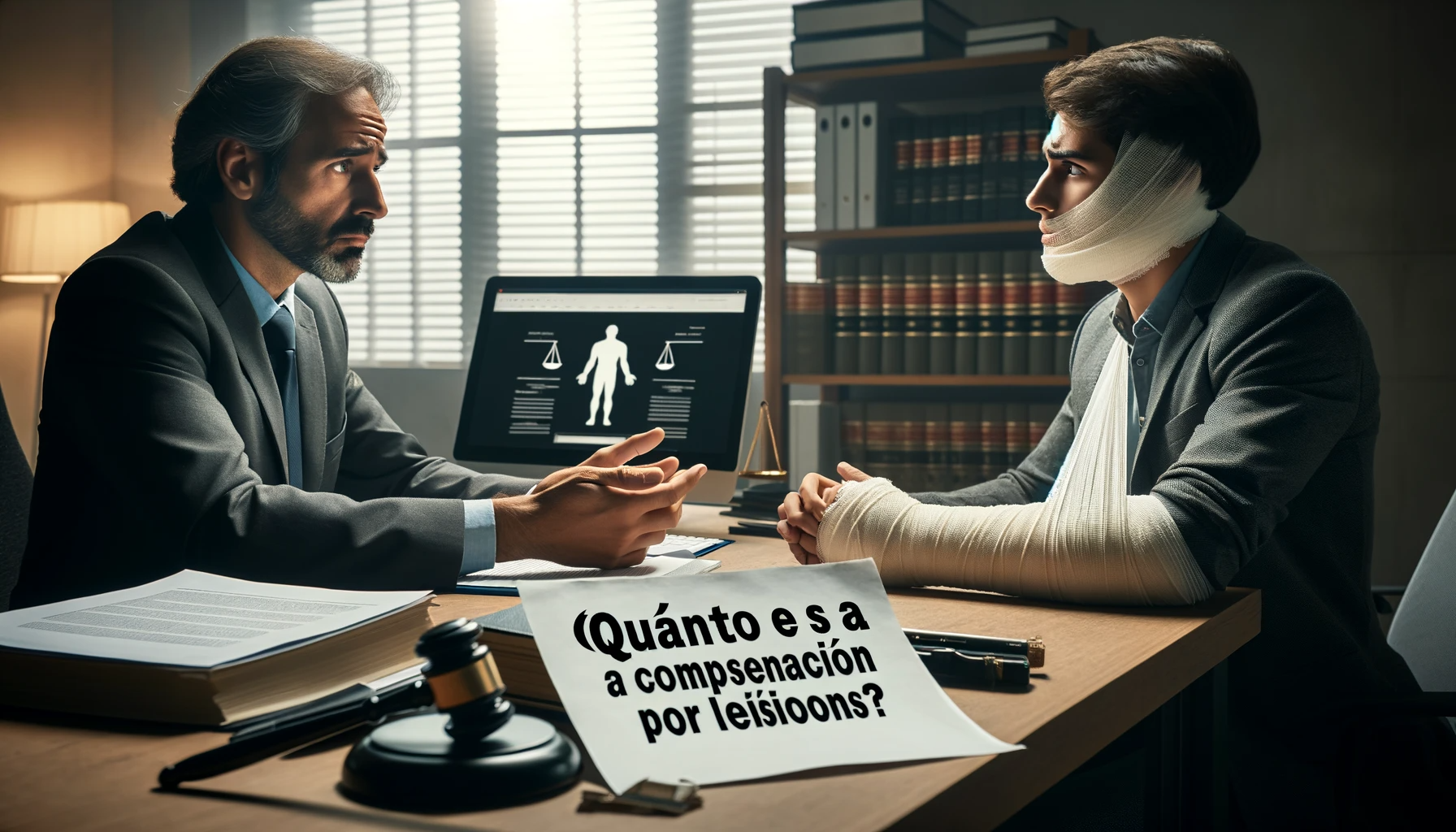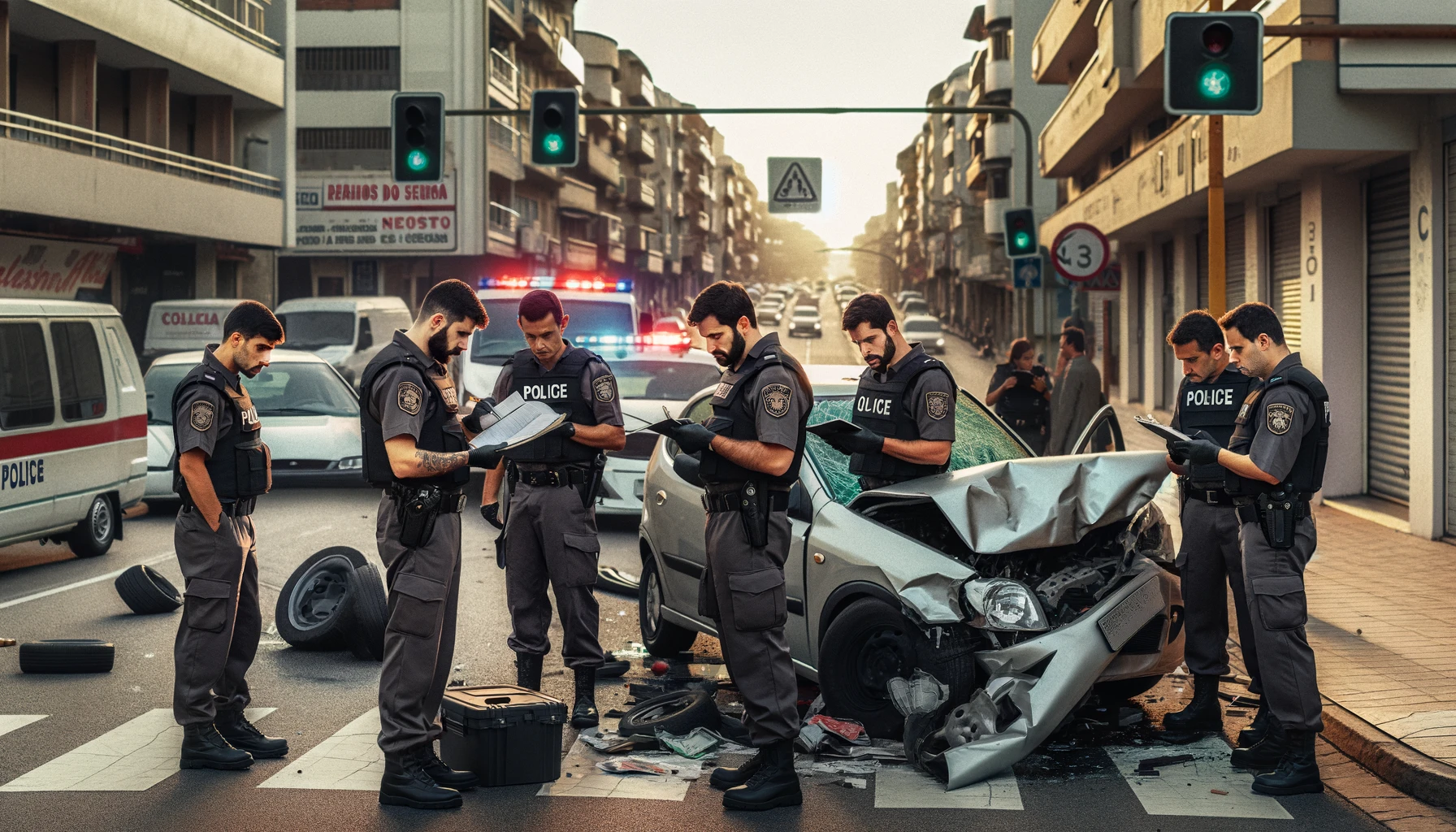Understanding the Concept of 'At-Fault' in Vehicle Accidents
The term "at-fault" refers to the party who is legally responsible for an incident due to their negligence or wrongful action. In the context of motor vehicle accidents, being determined as “at-fault” means that you are considered to be the one who caused the accident by law enforcement or insurance companies. This label is crucial as it often denotes who is financially responsible for damages or injuries resulting from the
Accident.
Determining Fault in Car Crashes
The process of determining who is at fault in a car crash can differ based on the jurisdiction but commonly involves law enforcement and insurance companies. Typically, an officer on scene will evaluate the situation, speaking with both parties and any witnesses, looking at damage on both vehicles, and considering traffic laws that were potentially violated. Afterward, they may issue a citation to the driver they believe is at fault. Insurance companies also conduct their own investigations, which may involve reviewing police reports, photographs, and statements from both drivers.
Criteria for Fault Establishment
Several factors come into play when establishing who is at fault in a
Car accident. One of the primary considerations is the violation of traffic laws. For instance, a driver who was speeding or ran a red light would likely be found at fault. Sometimes, both drivers share fault in an
Accident, and this is referred to as comparative or contributory negligence, depending on the jurisdiction. In these cases, each driver may be assigned a percentage of blame, affecting the compensation each party receives.
'At-Fault' in Rear-End Collisions
In most situations, the driver who hits another vehicle from behind is considered at fault for the
Accident. This is because every driver has a responsibility to maintain a safe following distance that allows them enough time to react and avoid hitting the car in front of them, even if it stops unexpectedly. However, exceptions exist, such as when the front driver reverses suddenly or has non-functioning brake lights.
The Impact on Insurance
Being at fault in a
Car accident can greatly impact one's car insurance rates. When an insured driver is considered at fault in an accident, their insurance company typically pays for the damages incurred. These costs can include the other driver's car repairs and medical expenses, leading to potential increases in premiums. However, specifics vary based on car insurance policy details and the driver's past record.
The Role of Car Insurance in Rear-End Collisions

Understanding Rear-End Collisions
Rear-end collisions occur when a vehicle hits the one in front of it. These accidents can range from minor fender-benders to high-speed crashes, each with the potential for significant
Personal injury and property damage. Though each collision's circumstances vary, the driver in the rear is typically found at fault due to failure to maintain a safe distance or failure to respond in time to prevent an
Accident.
Importance of Car Insurance
Car insurance plays a crucial role in mitigating the financial impact of a rear-end collision. It stands as a contract between the insurer and the insured party wherein the latter agrees to pay a premium, and the insurer, in turn, promises to cover certain costs arising due to accidents. This may include repair costs, medical expenses, legal fees, and other related expenses.
Liability Insurance in Rear-End Collisions
The most relevant component of car insurance in rear-end collisions is liability insurance. Liability insurance is mandatory in most states and covers the cost of repairing damage caused by the insured party if they are found at fault in an
Accident. In the case of rear-end collisions, the driver who hits the car from behind is usually considered at fault and, therefore, their liability insurance would cover the damages.
Collision Coverage and Its Impact
On the other hand, collision coverage serves as a safety net for the car owner. It covers the cost of repairs to the policyholder's vehicle, regardless of who was at fault in the incident. This means that even if you were hit from behind, your collision coverage could help cover the cost of repairs to your vehicle if the at-fault driver is uninsured or underinsured.
Personal Injury Protection or Medical Payments Coverage
In addition to property damage, rear-end collisions often lead to personal injuries.
Personal Injury Protection (PIP) or Medical Payments (MedPay) coverage can help cover medical expenses related to the incident. This covers not only the policyholder but also passengers in the vehicle during the accident. It can be particularly useful if the at-fault driver's liability insurance is insufficient to cover all medical costs.
Legal Implications When Hit From Behind
The Concept of Negligence in Rear-End Collisions
In the realm of auto accidents, legal responsibility often hinges on the principle of negligence. Legally speaking, those who fail to exercise a reasonable standard of care for the safety of others may be considered negligent. In many jurisdictions, a driver that hits another vehicle from behind is presumed to be at fault due to negligence. This presumption arises from the idea that if the driver was operating their vehicle responsibly, they should ideally have been able to prevent the accident.
Rebutting Presumption of Fault
While the presumption of fault generally lies with the driver who hit the car from the rear, this isn't always the case. The alleged negligent party can refute this presumption by presenting evidence that they weren't negligent. For instance, if the leading car suddenly reversed, if its brake lights were malfunctioning, or if it stopped unexpectedly for no apparent reason, such scenarios could assist in rebutting the presumption of fault.
Potential Liability of Multiple Parties
In some cases, more than one party can be held legally responsible for a rear-end collision. For example, if the leading driver was recklessly changing lanes or if a third driver's actions caused the second car to crash into the first one, both might share liability. Jurisdictions that follow the principle of comparative negligence would assign a percentage of fault to each party based on their degree of negligence.
Insurance Coverage and Liability
Depending on the jurisdiction, the driver who hit from behind may be liable for damages and injuries. Following an accident, their insurance could cover the costs up to the policy limit. If damages exceed the limit, they may be personally liable. Therefore, having comprehensive coverage reduces the risk of significant out-of-pocket expenses.
The Role of Legal Representation
Regardless of the circumstances leading to a rear-end collision, obtaining legal counsel can prove beneficial. An experienced attorney would be familiar with local laws and understand how to navigate insurance claims, negotiate settlements, and defend against allegations. They can protect your rights, whether you are the one who hit from behind or the victim of such an accident.
Analyzing the Situation: Exceptions to the Rule
Exploring the Unusual Circumstances
In certain exceptional circumstances, the vehicle behind may not be held entirely at fault. For example, if the front vehicle executes a sudden and unexpected maneuver that does not conform to general traffic norms, it could be viewed as an exception to the typical rule. However, proving such an unusual event might require in-depth investigation and robust evidence to strengthen the claim.
The Role of Negligence in Front Vehicle
Negligence from the driver in the front vehicle can also be a valid exception. If the stoplight or brake lights of the front vehicle are faulty and the rear driver could not anticipate the front vehicle's deceleration, liability might shift partially or entirely. In such cases, the responsibility may be shared by both parties or bear more heavily on the driver with faulty lights.
Detailed Examination of Multi-Vehicle Collisions
In a multi-vehicle collision, the chain reaction often starts with one car hitting another from behind, but several other factors come into play when assessing fault. The circumstances of each individual crash within the larger collision should be examined independently. If a car is pushed into the one in front due to the impact of a rear collision, the driver of the middle car might not be held at fault.
Understanding Sudden Stops
Under normal circumstances, a rear-end collision due to a sudden stop by the front vehicle would hold the rear driver at fault. However, if the stop was unreasonably abrupt or had no apparent reason (for example, stopping suddenly on a high-speed freeway), then this could be considered an exception.
Legal Aspect: Comparative and Contributory Negligence
Finally, regional laws and principles of ‘comparative negligence’ or ‘contributory negligence’ can have a significant impact on who is held accountable in a rear-end collision. In jurisdictions where these principles apply, the fault may be apportioned based on the degree of each driver’s negligence.
Note: This section does not provide legal advice and is intended for informational purposes only. Always consult with a licensed attorney or professional for advice on specific legal matters.
Dealing with Uninsured Drivers: Who Bears the Cost
Understanding the Scenario with Uninsured Motorists
When an accident involves an uninsured driver, the situation becomes complex. If the uninsured driver is at fault, he or she bears the primary responsibility for expenses, as legal guidelines generally require the party at fault to cover the damages. However, recovery of costs might be challenging if such a driver doesn't possess the financial means to pay these off.
Insurance Coverage Options against Uninsured Drivers
One way to deal with the risk of being hit by an uninsured driver from behind is through purchasing specific insurance coverage. Several insurance policies offer protection against uninsured motorists, which effectively transfers the financial bearing from you to your insurer. Uninsured/Underinsured Motorist Coverage (UM/UIM) is one such solution, providing compensation for both bodily injuries and property damage when the at-fault driver lacks adequate insurance.
The Role of 'No-Fault' Insurance Policies
In some jurisdictions, 'no-fault' car insurance policies exist which signify that each driver's insurance pays for their insured's damages irrespective of who caused the accident. These jurisdictions have laws in place to decrease the number of lawsuits filed over
Car accidents. In such cases, your own insurance company would bear the cost if an uninsured driver hits you from behind.
Navigating Legal Routes
If you're not covered by any special insurance policy, and an uninsured motorist has hit your car from behind, you may need to take legal action. You can sue the uninsured driver for damages. However, lawsuits can be costly and time-consuming, and there's no guarantee of recovery if the uninsured driver lacks sufficient assets.
Role of Collision Coverage and Health Insurance
Finally, collision coverage in your own insurance policy typically covers damages to your vehicle regardless of the fault. This could be useful if an uninsured driver hits you. Health insurance could also come into play, covering medical costs that arise from an accident with an uninsured driver. However, these strategies may lead to increased future insurance premiums.
Steps to Take Immediately After a Rear-End Collision
Ensuring Safety Post Collision
First and foremost, prioritize safety. If the collision causes you to block traffic and your vehicle is still drivable, move it to a safe location nearby such as the shoulder of the road. Avoid leaving your vehicle in a location that could cause additional accidents.
Assessing and Documenting Damage
After ensuring safety, it's important to assess the damage. Be sure to capture photos of your vehicle from multiple angles, particularly focusing on the area where the impact occurred. This documentation will be useful when filing an insurance claim or if you need to take legal action.
Reporting the Incident to Authorities
It's advisable to report any accident to the police, regardless of its severity. Having an official police report can significantly aid your insurance claim process. The officer will document details about the accident and may assign fault in their report.
Exchanging Information
Exchange your contact and insurance information with the other driver involved in the accident. Obtain their name, address, phone number, license plate number, and insurance details. If there are any witnesses, consider getting their contact details as they may be useful for further procedures.
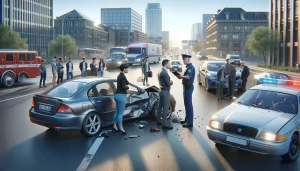
Seeking Medical Attention
Even if you feel okay after the accident, it's important to seek medical attention. In some cases, symptoms might not appear until later. A doctor’s report documenting any injuries from the accident can also be an important piece of evidence if you decide to pursue a
Personal injury claim.
Navigating the Claims Process: Getting the Compensation You Deserve
Understanding the Concept of Liability
When an accident happens, particularly a rear-end collision, the first step in the claims process is to determine who is at fault or liable. In most cases, the driver who hits another vehicle from behind is deemed at fault due to reasons such as tailgating or not paying attention. However, certain circumstances might shift or share the liability, like if the front car had malfunctioning brake lights.
The Role of Insurance Companies
Once liability is established, the next step involves insurance companies. The at-fault driver's insurance company is typically responsible for covering damages. However, this isn't always straightforward, especially when dealing with insurers. They may dispute liability or the cost of repairs and medical expenses. Documenting all damage and medical costs, and keeping an accurate record of all related claim information is vital to ensure you receive fair compensation.
Calculating Your Compensation
The actual compensation you're entitled to will depend on several factors. These include the cost of vehicle repairs or replacement, medical expenses, lost wages due to time off work, and possibly more subjective factors like pain and suffering. It's important to understand the different categories of compensation so you can be aware of what you're entitled to.
Negotiating with Insurance Adjusters
Negotiating with insurance adjusters can be a challenging part of the claims process. Adjusters often try to minimize the payout to save their company money. It's crucial to stand your ground and be prepared to negotiate for the amount you believe you deserve. Having a lawyer or other professional advocate on your side can make this process easier.
Filing a Lawsuit for Claim Settlement
If negotiation fails to bring about satisfactory results, it might be necessary to take the matter to court. In cases where liability is disputed, or the insurer refuses to pay a fair amount, filing a
Personal injury lawsuit might be the best option. However, lawsuits can be lengthy and complex, so it's important to seek professional legal advice before proceeding.
Conclusion
In a rear-end collision, the driver who hits the car from behind is usually considered at fault and is responsible for covering the damages. This is because drivers are expected to maintain a safe following distance and be able to stop in time to avoid a collision. However, there are exceptions to this rule, such as if the car in front suddenly stops without warning or reverses unexpectedly. Understanding your rights and the insurance process can help you navigate the aftermath of a rear-end collision more effectively. It's important to gather evidence at the scene, such as taking photos and exchanging contact information with witnesses, to support your claim. Additionally, seeking medical attention for any injuries sustained in the accident is crucial, even if they seem minor at first. Remember to report the accident to your insurance company as soon as possible to start the claims process and ensure you receive the compensation you're entitled to.
Look for an attorney who has the right legal resources for your legal needs.
Contact us here on the
Warmuth Law website or through our hotline 888-517-9888.
Frequently Asked Questions (FAQ's)
1. Who is usually at fault in a rear-end collision?
In most cases, the driver who hits the car from behind is considered at fault for the accident. This is because drivers are generally expected to maintain a safe following distance and be able to stop in time to avoid a collision. However, there are exceptions to this rule, such as if the car in front suddenly stops without warning or reverses unexpectedly.
2. Will the driver's insurance pay for damages in a rear-end collision?
Yes, the at-fault driver's insurance is typically responsible for covering the damages in a rear-end collision. This includes damage to the rear-ended vehicle as well as any medical expenses or other losses incurred by the occupants of the vehicle. However, it's important to note that insurance policies and coverage limits can vary, so it's best to review your policy or speak with your insurance agent for specific details.
3. What if the car in front suddenly stops in a rear-end collision?
Even if the car in front suddenly stops, the driver who hits them from behind is usually still considered at fault. Drivers are expected to maintain a safe following distance and be prepared to stop in case of sudden stops by the vehicle ahead. However, as mentioned earlier, there can be exceptions to this rule depending on the circumstances of the accident.
4. Can the driver in front be at fault in a rear-end collision?
While it's less common, there are situations where the driver in front may be partially at fault for a rear-end collision. This could be the case if the driver abruptly stops for no reason or reverses suddenly, causing the driver behind to be unable to avoid the collision. Determining fault in these situations can be complex and may require a thorough investigation by insurance companies or legal authorities.
5. What should I do if I'm rear-ended in an accident?
If you're rear-ended in an accident, first check for injuries and seek medical attention if needed. Then, call the police to report the accident and exchange insurance information with the other driver. It's also important to document the scene by taking photos of the vehicles and any visible damage. Finally, contact your insurance company to report the accident and begin the claims process. It's important to do this as soon as possible to ensure that you receive the necessary compensation for any damages or injuries.




